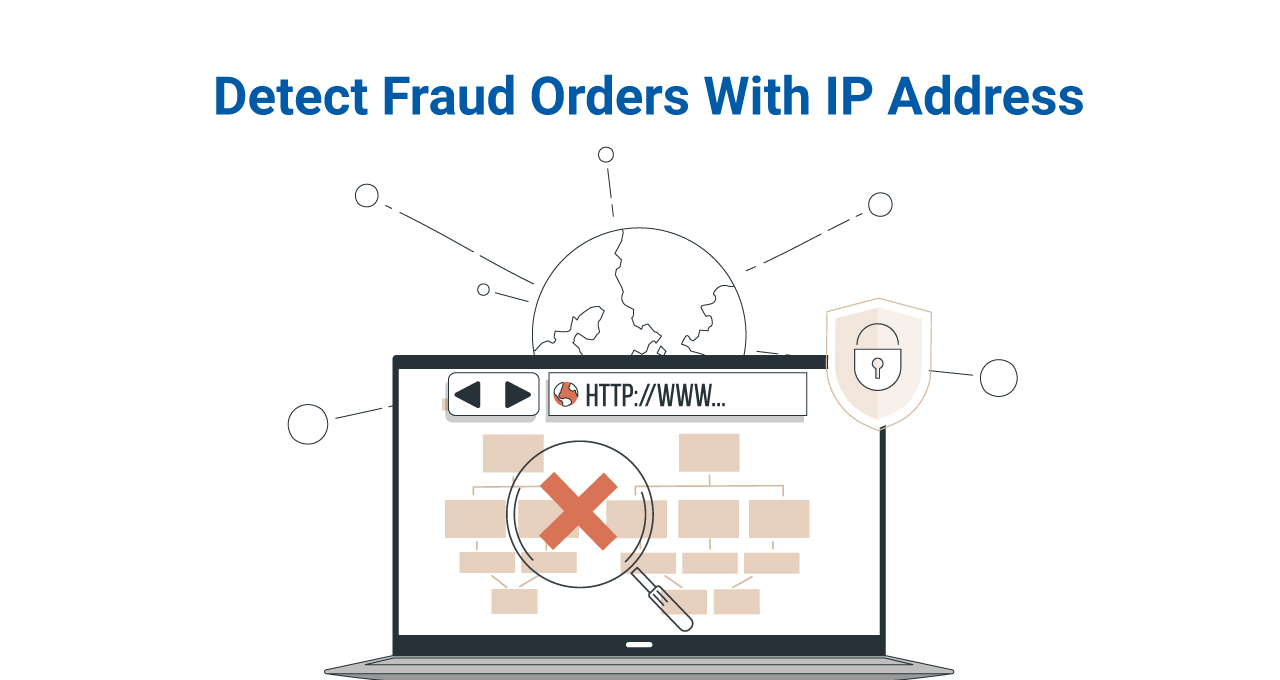
One of the biggest challenges with online stores is detecting and preventing fraudulent orders. Fraudsters attempt to use stolen credit cards to purchase goods online, and sometimes such transactions do go through without detection. If a fraud chargeback occurs, it is the merchant's responsibility to prove to the bank that the charge was made legitimately. If you can't prove the legitimacy, the money will be withdrawn from your bank and you can't do much about it.
There are several ways you can detect online fraud, and nothing can protect you 100%. However, by taking the precaution described below you can reduce the probability of becoming a victim of a fraud order
- IP Location: This most important aspect of the secure transaction is having the same shipping and billing addresses, and IP location confirming proximity of billing address. The IP Geolocation is usually accurate at the country level, and often times city and state may only be 50% accurate. If an order was placed from a different country than where the order is shipping to, it's likely that the order may be fraudulent.
- Email Address: An email address can tell you a lot about the risk level of the order. Fraudsters usually use free email addresses such as Gmail or Hotmail to place a fraud order, so such an email address will have a higher risk of fraud. You may use a Free or PAID email verification service to detect the validity of an email address and who it belongs to.
- Shipping and Billing Addresses: If a billing address is different than the shipping, you may have to take extra caution before shipping the order as you will lose a fraud claim if an order was shipped to an address other than the billing address. Fraudsters need a way to get their stolen goods and more often than not, they use a freight forwarding company or a re-shipper to obtain the order they placed fraudulently.
- Proxied IP: Fraudsters usually mask their IP address with a proxy service to hide their real IP address. You may use a free proxy detection tool such as the proxy check to determine if an IP address is behind a proxy.
- Multiple failed attempts: If you see multiple failed attempts before seeing a final approval, you may want to verify the order by following a phone call if multiple failures are from different billing addresses and different credit card numbers. Fraudsters attempt to use many stolen cards, so if you see multiple failures and different cards this is a high risk.
- Address Verification: Many gateway companies offer a variety of fraud detection suites including AVS (Address Verification Service), CVV or CVV2, and IP Addresses to detect possible frauds. By configuring your payment gateway settings, you may be alerted to possible fraudulent orders.
Aside from the detection methods described above, you may also want to check for the following patterns many fraud orders resemble.
- Large Orders for a new customer: If you see a large order from a first-time buyer, beware. Many fraudulent orders come in larger-than-average ticket sizes. If your average order size is $50, and seeing a $200 order from a first-time buyer you may want to do your homework and ensure the order is legitimate.
- International Orders: Foreign orders have a much higher risk than domestic orders, so it's important to verify the legitimacy of the order before shipping.
- Too many transactions: If you see too many transactions whether successful or declined from a single person, it is advisable to check for the validity of the orders.
- Too many orders from the same IP: If you see multiple orders from the same IP but different buyers, you may want to verify the orders as this is a huge risk.
- Expedited Shipping: Expedited shipping is very costly and common sense should be used to detect fraud. If a buyer is placing a $20 order and is willing to pay $40 for expedited shipping, extra caution should be used as common sense tells us this is not normal.
Conclusion
With the prosperity of e-commerce businesses, more and more fraudsters are attempting to place fraud orders. It is the merchant's responsibility to detect online fraud and mitigate the problem before shipping the package to the consumers. Shipping an item to an address different than the billing is a huge risk, and multiple failed transactions are another red flag. Do your due diligence before shipping out the item, otherwise, there is a very slim chance of recovering the goods or money once the package leaves your hand.
Share this post
Leave a comment
All comments are moderated. Spammy and bot submitted comments are deleted. Please submit the comments that are helpful to others, and we'll approve your comments. A comment that includes outbound link will only be approved if the content is relevant to the topic, and has some value to our readers.

Comments (0)
No comment